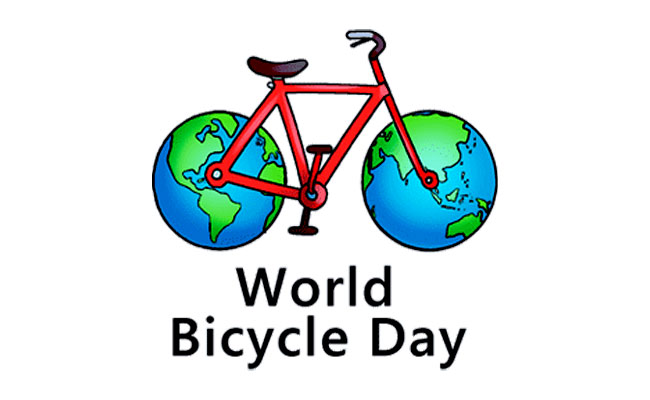“Bicycle Day” holds a peculiar but significant place in the annals of psychedelic history. It marks the first intentional ingestion of LSD (lysergic acid diethylamide) by Swiss chemist Albert Hofmann on April 19, 1943. This event wasn’t just a scientific experiment but became a transformative experience that altered perceptions of consciousness, medicine, and society at large. To delve into the story of Bicycle Day comprehensively, we need to explore the context, the journey of discovery, the experience itself, and the enduring impact it had on culture and science.
Context:
The early 20th century witnessed a surge in chemical experimentation, driven by both scientific curiosity and industrial applications. In the 1930s, chemist Albert Hofmann was working at the Sandoz Laboratories (now Novartis) in Basel, Switzerland, researching the medicinal properties of ergot, a fungus that grows on rye and other grains. Ergot had a long history of use in folk medicine, particularly for inducing contractions during childbirth.
Hofmann’s research focused on isolating and synthesizing various compounds from ergot, hoping to find new pharmaceuticals. In 1938, he synthesized LSD-25 (Lysergic Acid Diethylamide), a derivative of lysergic acid, as part of this research. However, initial tests on animals yielded disappointing results, and LSD-25 was set aside as a failed compound.
Discovery:
Five years later, on April 16, 1943, while re-synthesizing LSD-25, Hofmann accidentally absorbed a small amount of the compound through his fingertips. This accidental exposure caused him to experience strange sensations and altered perceptions, but he attributed it to the chemicals present in the laboratory. Intrigued by the effects, he decided to investigate further.
On April 19, 1943, Hofmann intentionally ingested 250 micrograms of LSD-25, a dose he considered small based on his previous accidental exposure. This day, now known as Bicycle Day, became legendary for what followed.
The Experience:
Hofmann’s Bicycle Day journey began as he started to feel the effects of LSD while cycling home from the laboratory. As the drug took hold, he experienced intense and surreal alterations in perception, including vivid colors, heightened senses, and a profound sense of interconnectedness with the world around him. The mundane sights of his bicycle ride transformed into a kaleidoscopic symphony of shapes and colors.
However, as the effects intensified, Hofmann’s journey took on a darker hue. He felt a sense of impending doom, fearing that he had poisoned himself irreversibly. Yet, despite the anxiety and uncertainty, Hofmann’s Bicycle Day experience ultimately unfolded without lasting physical harm. By the time he arrived home, his journey had ended, leaving him exhausted but profoundly changed.
Impact:
The experience of Bicycle Day didn’t end with Hofmann’s personal journey. He recognized the potential of LSD as a tool for understanding consciousness and embarked on further research into its properties. Subsequent studies by Hofmann and other researchers revealed the profound effects of LSD on perception, cognition, and emotional states.
Throughout the 1950s and 1960s, LSD gained popularity as a psychiatric medication and as a tool for psychotherapy. Researchers explored its potential in treating various mental health conditions, including depression, anxiety, and addiction. However, the widespread recreational use of LSD, combined with concerns about its safety and potential for abuse, led to its classification as a Schedule I controlled substance in the United States in 1970, effectively halting most scientific research into its therapeutic applications.
Despite its prohibition, LSD continued to exert a profound influence on culture and society. The countercultural movements of the 1960s embraced LSD as a sacrament of spiritual exploration and social revolution. Figures like Timothy Leary, Aldous Huxley, and Ken Kesey became prominent advocates for LSD, promoting its use as a tool for expanding consciousness and challenging societal norms.
However, the recreational use of LSD also gave rise to concerns about its safety and potential for abuse. High-profile incidents, such as the death of journalist and author Hunter S. Thompson’s “gonzo” style of journalism.
In recent years, there has been a resurgence of interest in the therapeutic potential of psychedelics, including LSD. Clinical trials have shown promising results in treating conditions such as depression, PTSD, and addiction. Organizations like the Multidisciplinary Association for Psychedelic Studies (MAPS) are leading the charge in advancing research and advocacy for psychedelic-assisted therapy.
Conclusion:
Bicycle Day stands as a testament to the power of scientific curiosity, the unpredictability of discovery, and the transformative potential of psychedelic experiences. What began as an accidental exposure in a laboratory became a landmark event that reshaped our understanding of consciousness and catalyzed profound cultural and scientific changes.
As we reflect on Bicycle Day, we’re reminded of the importance of open-mindedness, exploration, and responsible use when it comes to substances like LSD. While its recreational use carries risks, LSD also holds promise as a therapeutic tool for addressing mental health challenges. By approaching psychedelics with respect, curiosity, and a commitment to scientific inquiry, we can continue to unlock their potential for healing, understanding, and personal growth.






